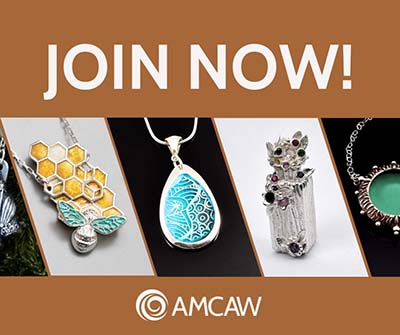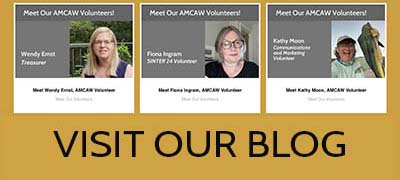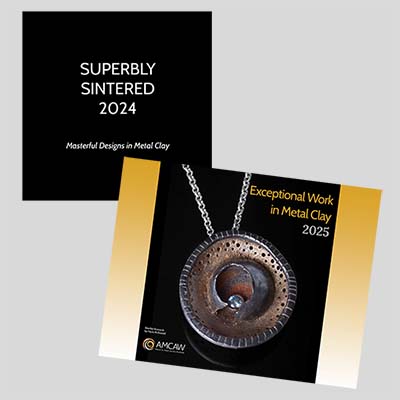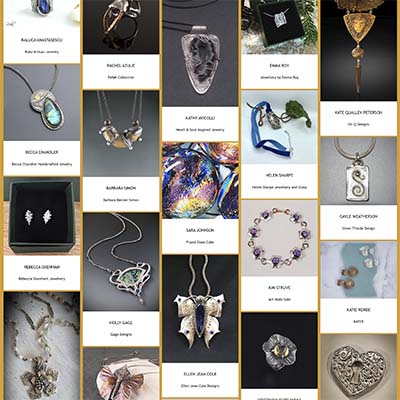How To Start A Guild
So, you really love working with metal clay! The virtual guild meetings and all the information on the AMCAW site are wonderful, but you want more! Perhaps it is time to form a local guild to foster the connection and learning you are looking for. This may sound like a daunting task to undertake but it is easier than you think! We have suggestions and ideas to help you start a guild.
WHY start a guild?
Before diving into this adventure, it is important to think about why you want to start a guild, and what you hope to get from this experience. There are of course many benefits to being part of an arts organization. Here are some of the benefits that the members of existing guilds have shared with us.
- Comradery with other metal clay artists by creating a place to discuss ideas with others who share your passion for metal clay.
- A chance to learn from each other through discussion and demos of techniques and tools. Everyone has something to share!
- Showing your work with the group and getting feedback and encouragement.
- A way to pool resources to bring in an instructor.
- Organize working retreats or “playdates” with or without instruction.
- Sharing and encouraging one another in an informal setting.
- Financial savings through group purchases of supplies and materials.
- Create a platform to educate the public about metal clay as an artistic medium.
- Opportunity to share and/or develop your leadership skills by serving on the guild’s leadership.
- New friends, inspiration, motivation, and challenge!


HOW to start a guild?
There are several things to consider when getting started. The first question is to find others who share your love of metal clay and have a desire to connect. Other questions include where the group will meet, and how will the organization be structured.
Determining how to structure your organization will take some thought and conversation with one another. The group needs to move forward on the same page and looking for the same results and comradery with other artists.
Finding metal clay artists to join you:
- Talk with an instructor you have taken classes with. Ask them to share your plans with their list.
- Facebook: post on both your personal page as well as any metal clay pages you follow, especially the AMCAW public and member pages.
- Many local art centers and art supply retailers will allow you to post a notice or leave a flier.
- Look for metal clay work at local retailers and art centers and ask them to pass on your contact information.
- Nationally known instructors may have students in your area and may be willing to share your information with them. It never hurts to ask.
Once you have found a few people who are interested in this venture, it is time to schedule an organizational meeting. At the first meeting, you can start to define the members needs and begin to set up a structure for the guild. A good place to start will be a discussion of what people hope to get from the guild and what their experience with metal clay and other mediums is. It will be important to find out if people are willing to be active participants, helping to plan and execute activities.
You may want to create a name for the guild and schedule more meetings. You will certainly want to discuss things such as:
- Frequency of meetings- monthly, quarterly, bi-monthly?
- Time of meetings: what is best for most people? Same time or vary time to accommodate more people?
- Location of meetings: public buildings such as a library or art center often have meeting rooms available. Other ideas: art supply stores, someone’s studio or home?
- What will meetings entail? Presentation? Show and tell?
- Communication: How to get information to members: E-mail, a Facebook page, website? Who will be responsible for this?
Guild Structure
There are many ways to set up the structure of a guild.
- There are guilds that have a structured system with a president, vice president, treasurer and secretary and follow Roberts Rules of Order during a formal part of their meeting.
- Other guilds are more informal but do have officers as the members deem necessary.
- Some guilds “share the work” with each member taking a turn to plan meetings etc.
Guilds often begin with those who volunteer to take on the needed responsibilities to get things started. As the guild develops you can continue to evaluate your needs and make changes accordingly. As you proceed you may find that it is better to have assigned duties or officers to keep things running smoothly. Having more people can help spread out the “work” and keep things running smoothly.
Your group also needs to determine how to pay for guild expenses as they come up.
- Annual dues
- Split costs as they arise
You should check the laws in your location to determine what formal steps need to be taken. You may need to register your business and get proper tax identification.
- Administering expenses through someone’s personal or business accounts puts them in the position to have to report income or pay taxes on those expenses.
- In the US, you cannot get a bank account without certain business documents registered with the state.
- There can be benefits to becoming a non-profit organization, although not all guilds do this. There is some paperwork and expense involved in becoming a 501(c)3 but there are certainly benefits and obligations.
NEXT?
Get a group of metal clay enthusiasts together. The magic starts to happen, and plans start to materialize. You can draw on the experience of the group to figure out the details to start a guild.
The most important thing is to have fun and share the metal clay love!










